SRNL Exploring Practical and Research Applications of 3D Printing
“3D printing has different constraints compared to traditional manufacturing. It is great for creating flow optimized pathways.” – Cam Chatham
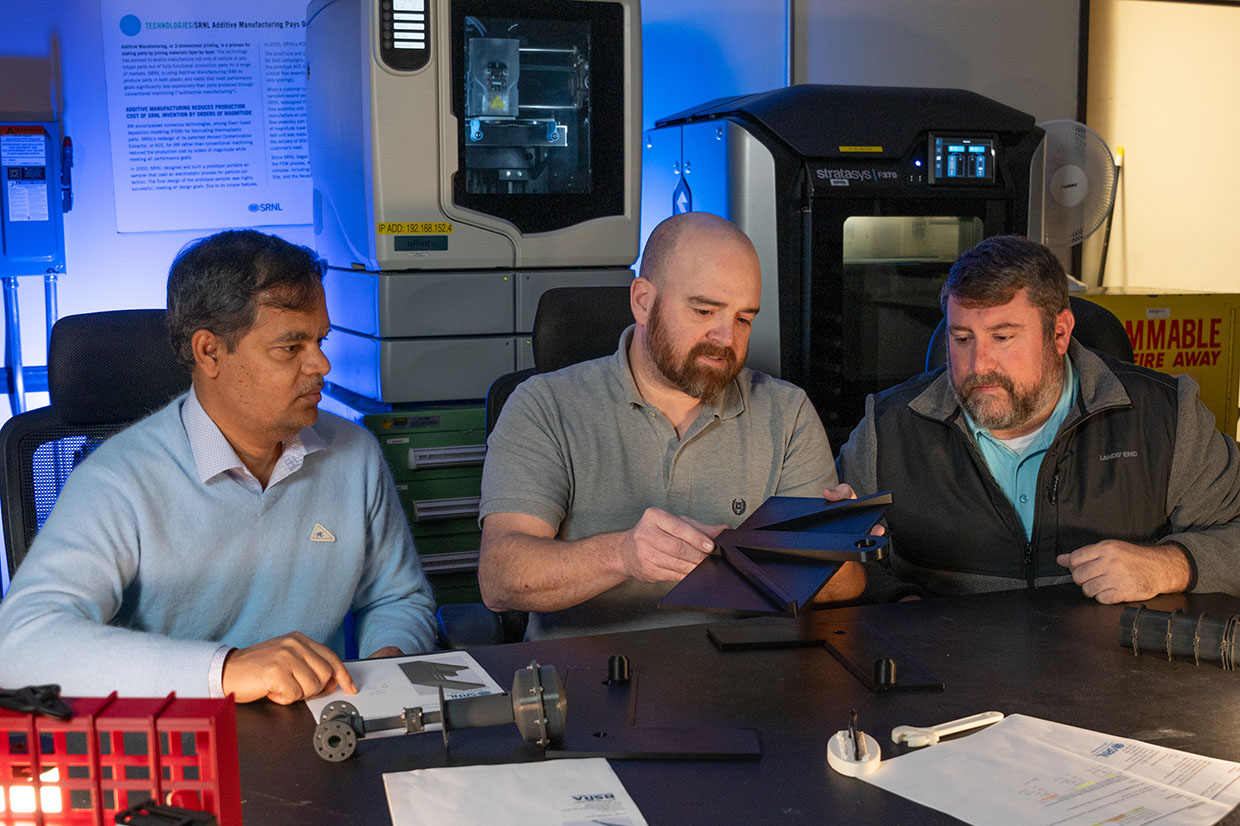
Guru Dinda, Matt Hamm and Jimmy Asbell meet in SRNL’s Applied Additive Manufacturing Laboratory. Photo by Laura Russo, SRNS.
Anyone can buy a 3D printer for a few hundred dollars these days, but researchers at Savannah River National Laboratory (SRNL) are advancing the technology from the hobby shop to the science lab.
SRNL researchers are harnessing technology to improve safety, bolster supply chains, discover new materials and develop novel manufacturing methods. SRNL added 3D printing, also known as additive manufacturing, research facilities in 2017 and has continued to build upon capabilities in recent years. The laboratory has had 3D printing production capability since 2001. Today, SRNL has a robust program with the ability to print polymer, metal and ceramic-based objects.
Engineering Technical Support Specialist Matthew Hamm oversees SRNL’s applied additive manufacturing laboratory, and says he enjoys helping clients with their varied needs.
“Every day we’re working on something different and something that’s supporting a different area of the lab,” says Hamm.
Some of the projects Hamm and his fellow team members have worked on include mock-ups for job task previews and pre-job briefings, one-of-a-kind parts for deployment at Savannah River Site, training models and more. The lab’s 3D printing capabilities increase employee safety by allowing better understanding of jobs and decreasing the amount of time individuals might be exposed to contamination. The technology also decreases the need to source parts from outside of SRS, which results in greater efficiency and speed.
SRNL engineer Thomas Lee says the additive manufacturing lab allows his team to be more responsive to customer requests.
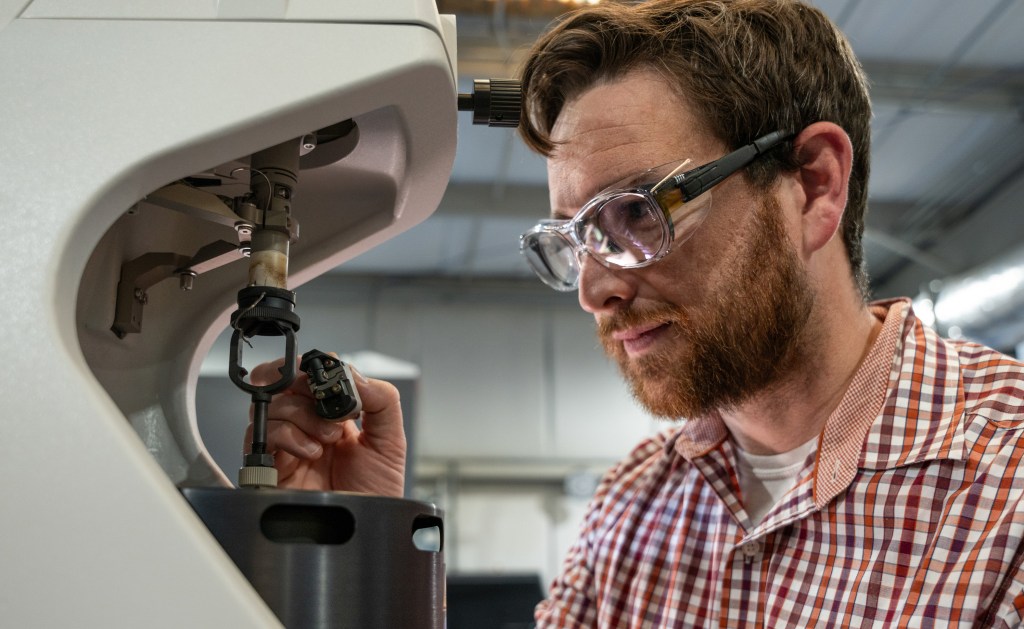
Cam Chatham loads a sample of a new material developed for additive manufacturing into the dynamic mechanical analyzer (DMA). Photo by Laura Russo, SRNS.
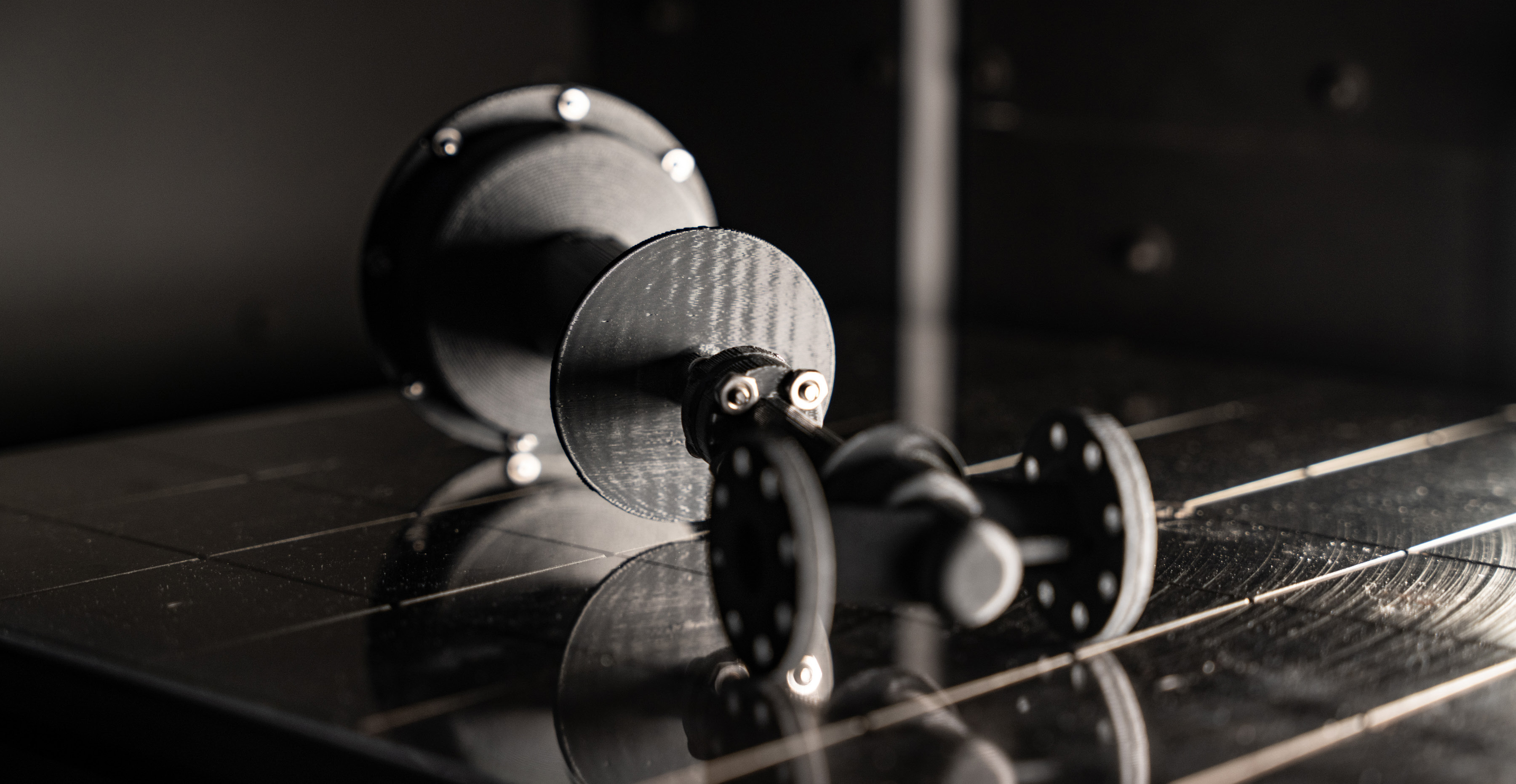
A 3D printed automated chilled water valve sits inside a printer in SRNL’s Applied Additive Manufacturing Lab. The part was printed on the model 450 printer in high resolution ASA material. Photo by Laura Russo, SRNS.
“We currently use the advanced manufacturing lab to provide scale systems for ergonomic studies and training purposes. The lab and staff provide a quality product at a fraction of the cost and lead times while maintaining functionality,” said Lee.
SRNL Polymer Additive Manufacturing Research and Development Lead Cam Chatham notes that the lab’s additive manufacturing capabilities also are significant when it comes to maintaining legacy systems.
“Many of the DOE sites were constructed in the 1950s. It’s not uncommon to come across parts that haven’t been made since the 70s. There also are some items that are only being manufactured in sensitive countries that we can no longer source,” said Chatham. “Additive manufacturing really helps to shore up our domestic supply chains, especially for the more unique, one-off parts.”
Some of Chatham’s work focuses on how 3D printing can be used to integrate multiple functionalities into one part. For instance, Chatham suggested additive manufacturing could allow structural components to double as energy or waste storage in alternative energy applications, such as hydrogen fuel cells.
“3D printing has different constraints compared to traditional manufacturing. It is great for creating flow optimized pathways,” says Chatham. “You can get lots of surface area exposed that you could use to store energy or filter out byproducts.”
SRNL’s interest in 3D printing also goes beyond the practical applications. Chatham and his colleagues Guru Dinda and Drew Snelling are interested in the research and development side of additive manufacturing as well.
Not only is additive manufacturing a valuable tool for creating complicated objects, but it also can be used to discover new materials. SRNL Researcher Guru Dinda is doing just that. Dinda, an expert in metal additive manufacturing, is working to create new materials for extreme temperature applications, such as fusion reactors, gas turbines and rocket nozzles.
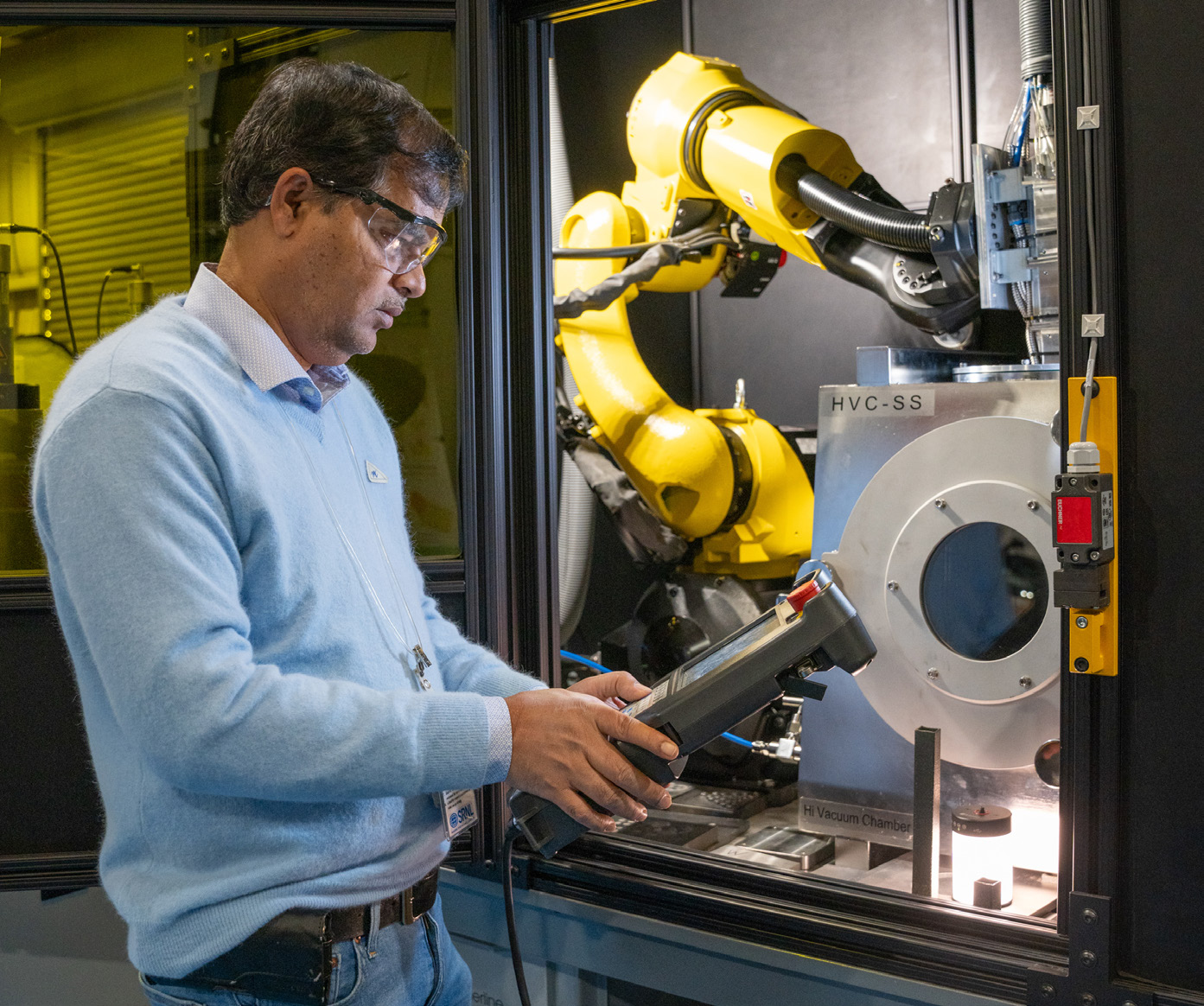
Guru Dinda inspects the DED system. Photo by Laura Russo, SRNS.
He hopes to develop a new alloy concept called a “refractory high entropy alloy.” The material would harness the temperature resistance of refractory materials but reduce the brittleness and oxidation susceptibility typically associated with them. Dinda is developing the new material by combining different percentages of four different refractory elements.
“Initially we do thermodynamic simulations to find the composition space where we can get our desired material properties,” says Dinda. “We plan to develop 200 to 500 discrete alloy combinations, and then analyze their properties to find out which composition range best achieves the desired material properties.”
One application of Dinda’s work is the development of an alternate material for plasma facing components, which are used to remove heat from fusion reactors. Currently, a component made of tungsten and copper is used, but their thermal expansion coefficient is quite different, so stress is generated at the interface between the two materials. 3D printing would allow for a gradual transition from tungsten to copper, which would significantly increase the strength of the component.
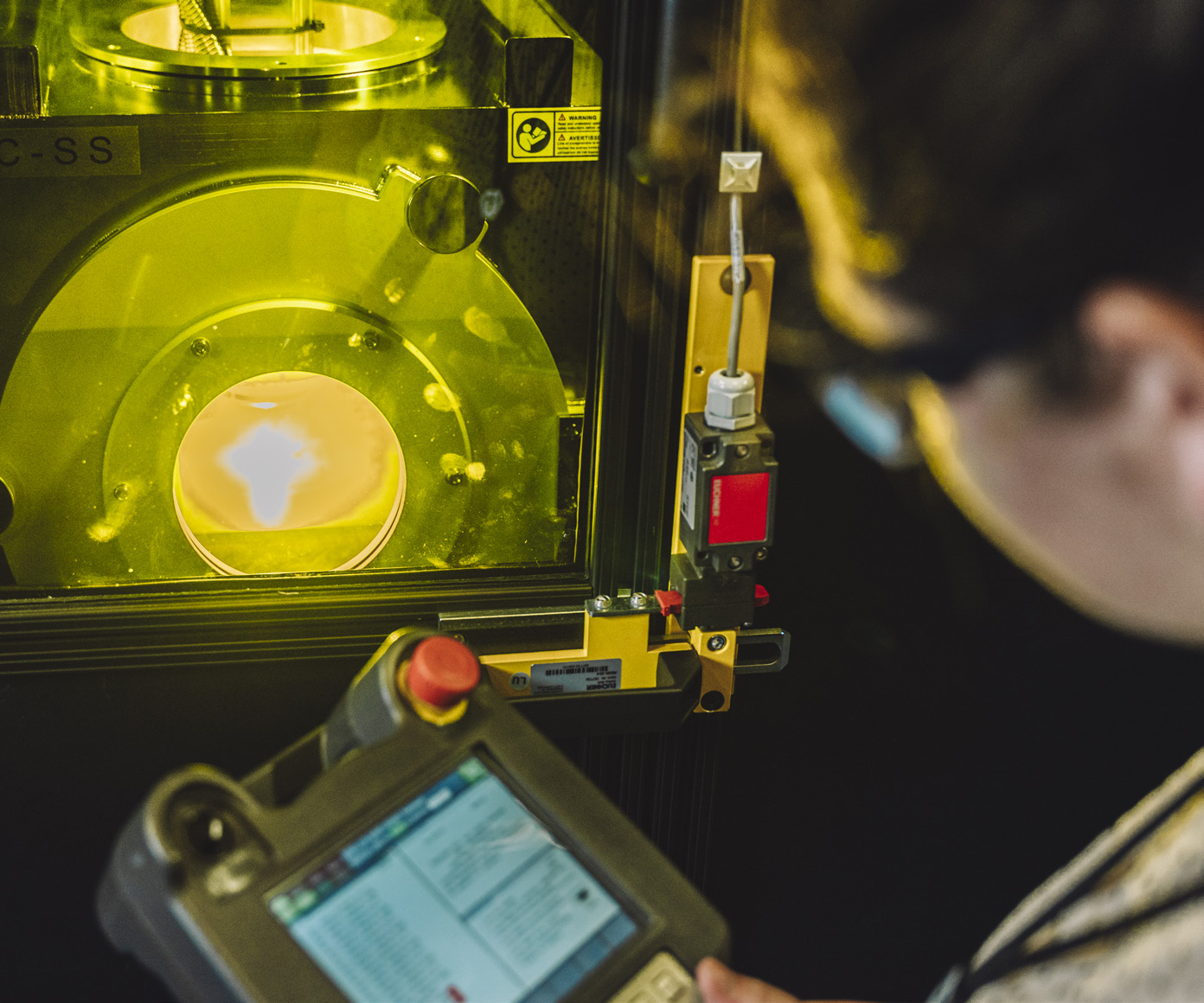
Colleen Hilla monitors the laser directed energy deposition process. Photo by Laura Russo, SRNS.
Another area of research focus is hybrid manufacturing technologies. Chatham recently completed a Laboratory Directed Research and Development (LDRD) funded project led by colleague Don Benza exploring the potential to pair filament extrusion 3D printing with 3D inkjet printing technologies. Chatham says the world of possibilities is endless when it comes to integrating additive manufacturing with more traditional methods.
“I think from the research side we’re going to see a lot more of the hybrid manufacturing technologies. For instance, a material extrusion system that also has an inkjet head or a hybrid additive plus subtractive machine,” says Chatham. “We’re going to see new processes combining technologies in a way that highlights what each process does best.”
Drew Snelling, the newest member of SRNL’s additive manufacturing team, echoes Chatham’s sentiments and asserts that SRNL is perfectly positioned to forge a path in developing new manufacturing technologies.
“SRNL has the potential to advance additive manufacturing through new materials, processes and equipment research to support our missions. One of the ways this will be enabled is through the Advanced Manufacturing Collaborative (AMC), a new facility being constructed on the USC-Aiken Campus,” says Snelling. “With investment in the AMC, significant opportunities exist to advance new technologies by fostering additional collaboration with academia, industry and other national labs.”
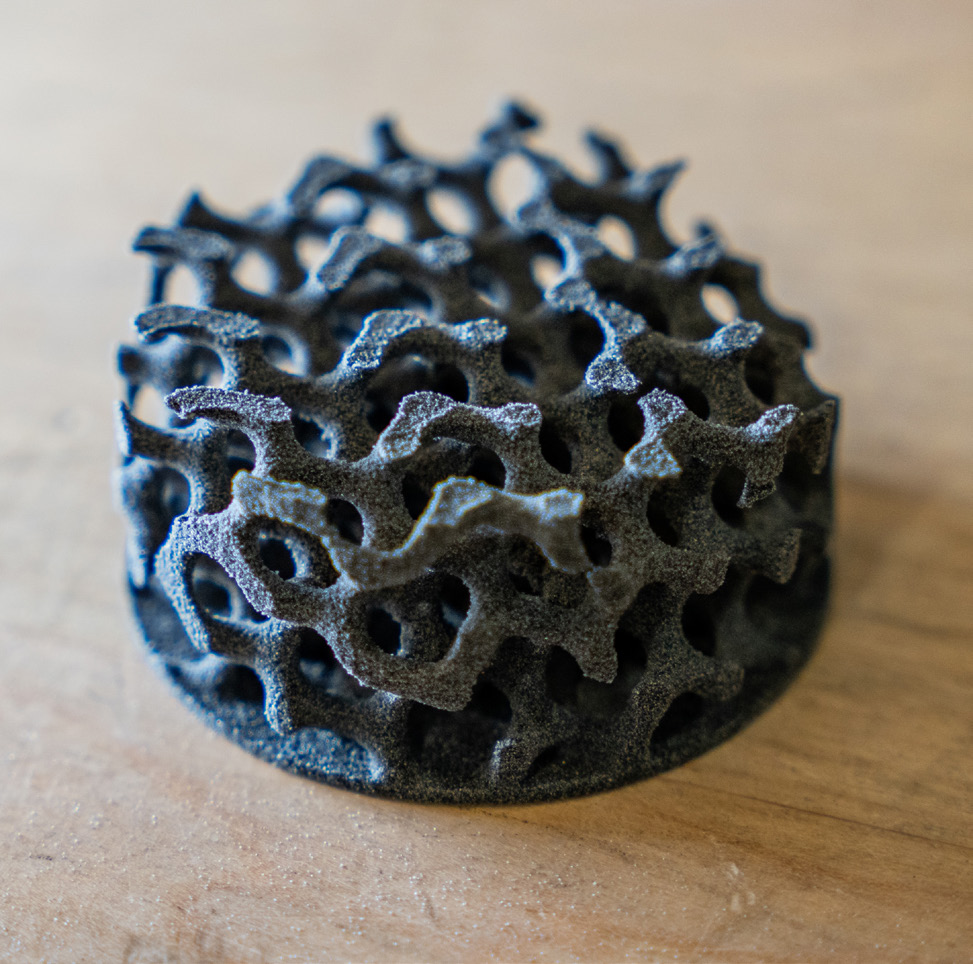
A gyroid lattice structure made from tungsten-filled polypropylene on a Sintratec Kit laser powder bed fusion machine. Photo by Laura Russo, SRNS.